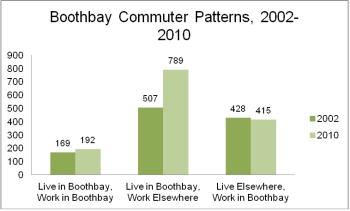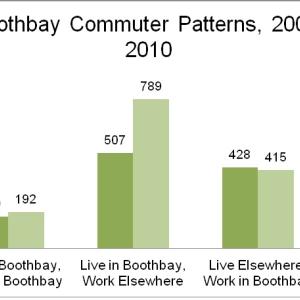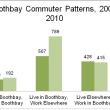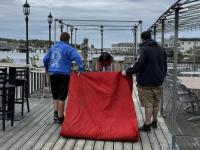Chamber of Commerce urges voting yes
The Boothbay Harbor Region Chamber of Commerce (BBHRCC) is a 501-C-6 voluntary organization established in 1962 to promote the economic, civic and social welfare of the people of the Boothbay Harbor Region. Its mission is to promote a positive business climate by focusing on advocacy, access and leadership.
“On November 5, 2013, the town of Boothbay is presenting two articles for special town meeting vote that align perfectly with that mission and therefore our Board has voted unanimously to support these two articles,” said Catherine Wygant Fossett, executive director.
The BBHRCC’s primary goals are to: Bolster local businesses and the communities we serve, serve as guardian of the community’s economic well-being, advocate on the behalf of the business community, and promote avenues of tourism.
“The BBHRCC’s vision is to empower the region’s business community to collaboratively advance a proactive agenda for economic growth and prosperity. Voting yes on Articles #2 and #3 of the Town of Boothbay Special Town Meeting on November 5, 2013 are central to that focus,” commented Pamela Byrne Riley, president of the board. “It is clearly a direction that will be advantageous to our members.”
Question #2 develops the Tax Increment Financing (TIF) District. TIF’s are a public economic development financing program triggered by the local government. It is intended to stimulate private sector investment and job creation of targeted industries and targeted locations. Encouraging towns to use programs like these are central to our mission in encouraging jobs in the Boothbay Harbor region.
According to the Census, most employed Boothbay residents commute out-of-town to work. Only about 20 percent live and work in Boothbay. From 2002 to 2010, Boothbay experienced a significant increase in the number of residents who live in Boothbay, but work elsewhere (see photo).
Since this information is drawn from sample surveys, it has a fairly large margin of error but it does provide a picture of the overall pattern. At the same time, the Census shows that a significant group of employees commute into Boothbay to work in local businesses.
The TIF, as proposed, creates a mechanism that spurs business growth within an already created commercial district, with minimum municipal service needs, and without public investment in infrastructure to incubate that growth.
Question #3 is the bond request for public transportation paid for by TIF proceeds. With the owner of the Boothbay Harbor Country Club, Paul Coulombe’s guarantee on the loan, public transportation improvements can be implemented without impacting the tax rate.
A low tax rate is instrumental in persuading aspiring businesses to locate in a small town and methods to improve major routes and intersections without jeopardizing that rate is important for BBHRCC.
Additionally, as a tourist destination, with small town charm, people desire transportation that can accommodate the height of the season. Any transportation hindrance to visitor vacation plans jeopardizes our regional tourism attraction. People may be inclined to visit other places that can accommodate the height of the season.
The BBHRCC made it clear in our mission that that we will promote this positive business climate through access and leadership. The Town of Boothbay has offered publicly to allow a committee of all stakeholders to develop the Village Improvement Plan which has been a topic of discussion with the 1994 MDOT Design, the 2002 Route 27 Corridor Study and the 2002 Alternative Design.
This strategy is a clear and open access to governmental action that would otherwise be off limits to businesses owners and the Chamber of Commerce. Fossett concluded, “We are taking a leadership role in embracing this process, encouraging townspeople and businesses to get involved in the development of this plan and offer an open opportunity to be involved by being BBHRCC members.”
Event Date
Address
United States

























